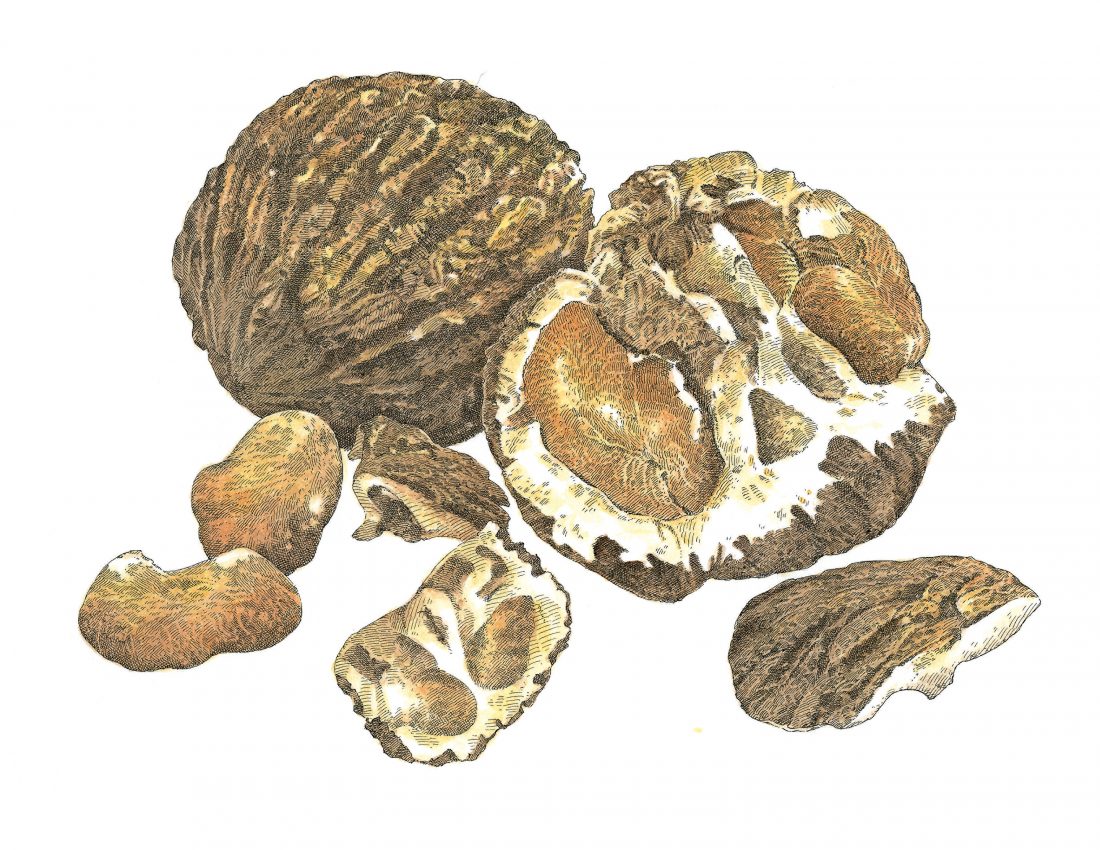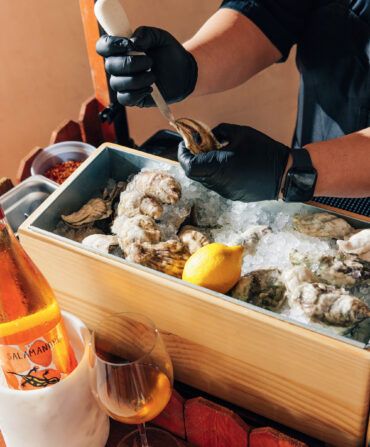Think of the black walnut as the English walnut’s brash American cousin. “My favorite memories are of the sharp smell of their blackened hulls when you walk over them,” says Paul Fehribach, who grew up collecting black walnuts in the woods of southern Indiana, not far from the Kentucky border. Today, he’s the executive chef and co-owner of Big Jones, a Chicago restaurant specializing in heirloom Southern dishes, and the native nuts are one of his favorite seasonal ingredients. Most prevalent in the central Southeast as well as in Virginia and North Carolina, they begin falling from the trees around October but will stay fresh in their shells for months and usually remain available from farmers or at gourmet markets through the New Year. (You can also find them online at black-walnuts.com.) In fact, Fehribach prefers them this time of year, when, he says, they are at peak flavor. Taste-wise, black walnuts are bold and robust, with an earthiness reminiscent of black tea. At the restaurant, the chef roasts them in brown butter before serving them with soups or sprinkled over salads of cold-weather favorites such as beets, turnip greens, and rutabagas. They are also a standout scattered on a holiday party cheeseboard. When selecting black walnuts, make sure they have a pleasing woody aroma (overripe nuts will have a rancid odor), and store them in an airtight container in the freezer. “These are the perfect foraged food,” Fehribach says. “They’re abundant yet unique, and they’re delicious.”
Black Walnuts Three Ways
 Sizzle With Sprouts
Sizzle With Sprouts
“I was a Brussels sprouts junkie as a kid, but we only had them at holidays. As a chef I had to develop a dish I could eat every day.”
Thinly slice 4 cups Brussels sprouts and ¼ cup shallots, then toss together in a mixing bowl. Heat a 10-inch skillet until it’s smoking. Working quickly, add 2 tbsp. vegetable oil and then sprouts and shallots, which will char. Place 3 sprigs thyme and ¼ cup black walnuts on top. With a large spatula, gently turn the bottom vegetables over the top. Add 2 tbsp. butter to the pan, stir, and continue cooking 3 to 4 minutes. Season with fresh lemon juice and black pepper, discard thyme, and serve.
 Top a Soup
Top a Soup
“This butternut squash soup is liquid courage in the face of cold weather.”
In a large saucepan on low heat, combine 6 cups diced and peeled butternut squash, 2 diced leeks, 1 qt. whole milk, 2 tsp. salt, and ¼ tsp. cayenne pepper. Cover and simmer 1 hour until vegetables are tender. Meanwhile, melt 1 stick butter in a small saucepan over medium-high heat until just browning. Working in batches, fry 16 to 20 sage leaves until crisp. Drain on paper towels, and season with salt. Repeat with 2 cups shelled black walnuts. Puree squash mixture, then heat through. Whisk in 4 tbsp. cold butter and garnish soup with sage and walnuts.
Bake a Pie
 “Tasty as pecan pie is, it can often be too rich and cloying. The extra bite of black walnuts and sorghum’s savor keep everything in balance.”
“Tasty as pecan pie is, it can often be too rich and cloying. The extra bite of black walnuts and sorghum’s savor keep everything in balance.”
Preheat oven to 350°F. In a medium mixing bowl, cream 4 tbsp. softened butter with ¼ cup sugar and 1 tsp. kosher salt. Add 3 eggs, 1 at a time, beating well after each addition. Stir in 1 cup sorghum, 2 cups black walnuts, and 2 tbsp. bourbon. Pour mixture evenly into a prebaked 9-inch piecrust and bake 45 to 50 minutes, until pie is springy to the touch. Serve warm or cold with ice cream or whipped cream.








